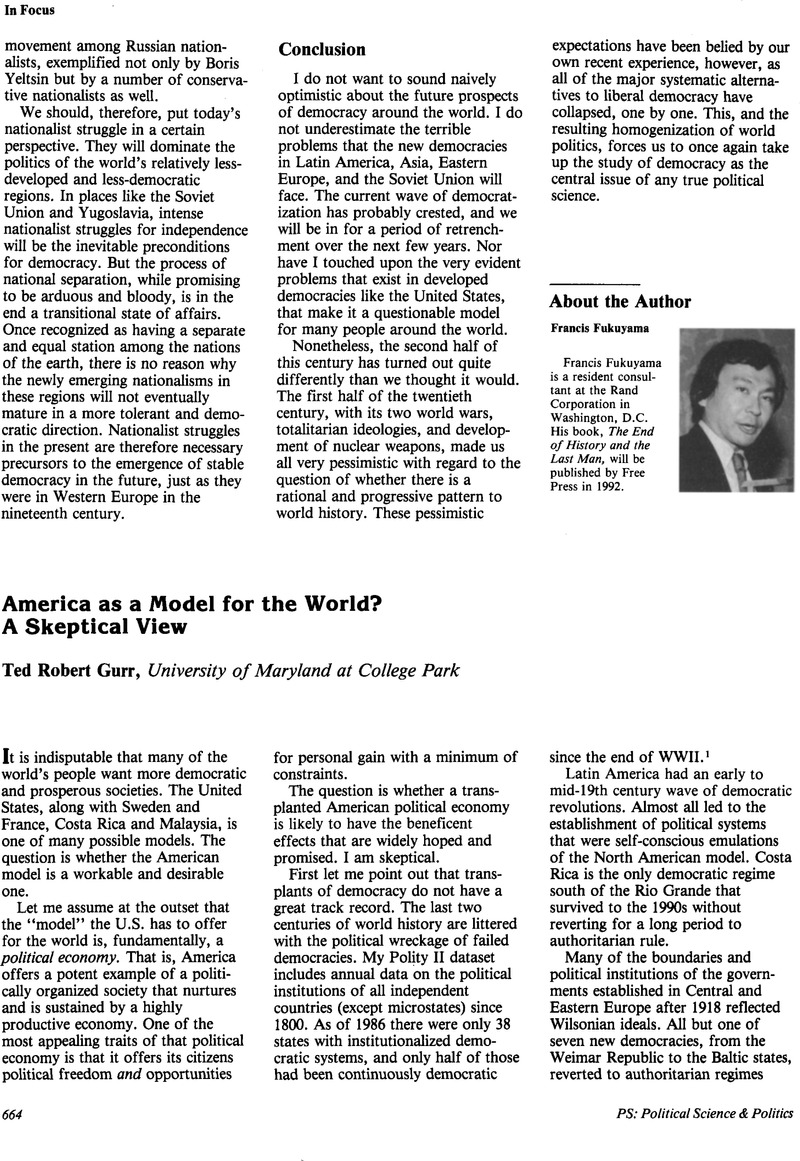No CrossRef data available.
Article contents
America as a Model for the World? A Skeptical View
Published online by Cambridge University Press: 02 September 2013
Abstract

- Type
- In Focus: The 1991 Annual Meeting
- Information
- Copyright
- Copyright © The American Political Science Association 1991
References
Notes
1. Gurr, T. R., Jaggers, Keith, and Moore, Will H., “The Transformation of the Western State: The Growth of Democracy, Autocracy, and State Power since 1800,” Studies in Comparative International Development (25 Spring 1990): 73–108.CrossRefGoogle Scholar Institutionalized democratic systems are those scoring 8 or more on a 10-point scale.
2. Democratic regimes collapsed in Poland and Lithuania in the mid-1920s, in Germany, Austria, Estonia and Latvia in 1932–33. The Balkan states had authoritarian regimes throughout, some with limited democratic features.
3. Huntington, Samuel P., “Democracy's Third Wave,” Journal of Democracy 2 (Spring 1991): 12–34.CrossRefGoogle Scholar
4. More hopeful evidence is provided by Karen L. Remmer's paper at the 1991 meetings of the APSA, “Elections and Economic Crisis in Latin America,” which demonstrates that economic crisis did not undermine popular support for Latin America democracy in the 1980s.
5. Lipset, Seymour Martin, “Some Social Requisites of Democracy: Economic Development and Political Legitimacy.” American Political Science Review 53 (No. 1, 1959): 69–105.CrossRefGoogle Scholar
6. From Handbook of Economic Statistics, 1990 (Washington, DC: Directorate of Intelligence, Central Intelligence Agency, 1990), table 9.
7. From a study by the Center on Budget and Policy Priorities summarized in the Washington Post, July 24, 1991: A4.
8. My calculations from World Resources 1990–91: A Report by The World Resources Institute (New York: Oxford University Press, 1990), table 16.3.
9. More than 90% of homicides in the US are intra-racial. On trends and differentials in homicide rates see my “Historical Trends in Violent Crime: Europe and the United States,” in Gurr, T. R., ed., Violence in America: The History of Crime (Newbury Park, CA: Sage, 1989): 21–54.Google Scholar


